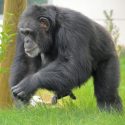
Western Chimpanzee Natural History
Size
Amongst mature chimpanzees the males tend to reach heights or up to 1.2 m (3.9 ft), weighing as much as 91 kg (200 lbs), whilst the females are often slightly smaller in height, and may be significantly smaller in mass and weight.
Habitat and Distribution
This species can live in a wide range of different habitats including moist secondary rain forest, lowland forest, swamp forest, dry forest, savanna woodland and even open farm land (however this is an area where there is often the potential for conflict between chimpanzees and people). They inhabit such areas through parts of Liberia, Sierra Leone, Guinea-Bissau, Ghana, Senegal, Mali, Guinea and Cote D’Ivoire (with the latter two being the most densely populated by the chimpanzees).
Age
In the wild this species can often grow as old as 40 years, however lifespans of 50 years or more have been regularly documented in captivity.
Diet
The dietary habits of this species are described as omnivorous frugivore due to their ability to eat a wide variety of items ranging from plants (leaves, flowers, bark and resin) to insects and animals to eggs. Their favourite foods however are fruits.
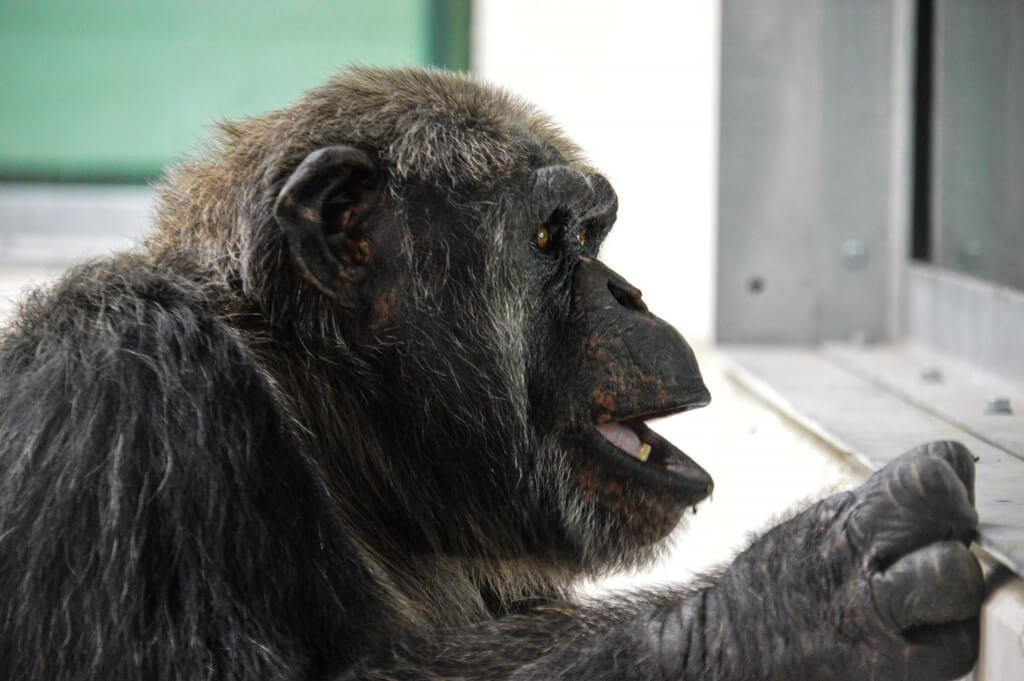
Groups and Breeding
The social life of a chimpanzee is very complex, and this is largely due to their group dynamic, living in “communities” which might contain anywhere from 15 to 150 individuals of different ages and both sexes. A community will have 2 separate social ladders, one for the males and one for the females. Moving up and down on these ladders is common, with the male hierarchy often being determined though sheer strength and aggression whilst the female social ladder is more about who females socialise with, manipulating individuals around them, and in some cases even just being born to the right or wrong mother – inheriting her social status.
When our hunting and also to a lesser extent when resting these big communities will break down in to various smaller groups. It is not uncommon for these smaller groups to be fairly fluid in their membership and as such whilst chimps usually stay in their community (unless you are a mature male looking to find his own females), they move around different sub groups, leading to the way they live being coined as a fission-fusion society.
Threats
The Western Chimpanzee faces a wide range of different problems in the wild, ranging from habitat loss and fragmentation (mostly due to mining, logging and farming) to poaching (whether it be for traditional medicine, bush meat, live animal sales or due to human / chimp conflict). The IUCN Red List classes this species as Critically Endangered.
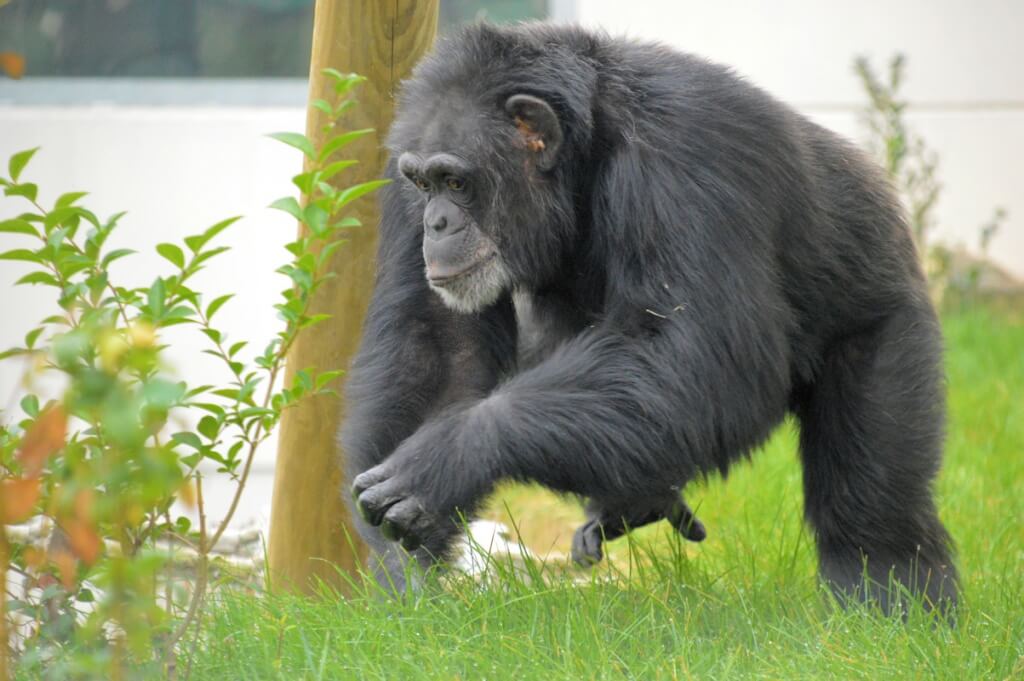
Interesting Facts
The Western chimpanzees of Senegal in particular are quite famous for their unusual hunting techniques. They have been witnessed on numerous occasions finding long, straight sticks which they strip down and the chew the tip in to a sharp point. The stick is at this point a rudimentary spear which the chimps (females in particular) use to remove bush babies from tree hollows which are otherwise out of real.
The Western Chimpanzee at Wingham Wildlife Park
The story of the chimpanzees at Wingham Wildlife Park is a very long story which has often been an emotional roller coaster for everyone involved, however this all stopped and became a reality for the staff at Wingham Wildlife Park, the parks visitors and also the chimpanzees themselves on 25th October 2016, when the 7 chimpanzees (Fritz, Tara, Lucas, Georgia, Agatha, Elvira and Faye) arrived from the USA. Here is a short version of the story of their journey to Wingham Wildlife Park from the Yerkes National Primate Research Center in Atlanta, Georgia, USA, taken from press releases during this journey.

WWP staff had spent approximately 24 months working on (not including a further 18 months of planning and design work prior to this) a new £1.5million, 12,700-square-foot, indoor/outdoor home near the entrance to the park.
Tony Binskin, the owner of WWP, says about the new enclosure, “We are a self-funded park, but have spared no expense on the new enclosure we have built for these chimpanzees. As well as building an absolutely massive central space for these animals, we have included private bedrooms for them, a dedicated veterinary room and even a green energy-powered, underfloor heating system.”
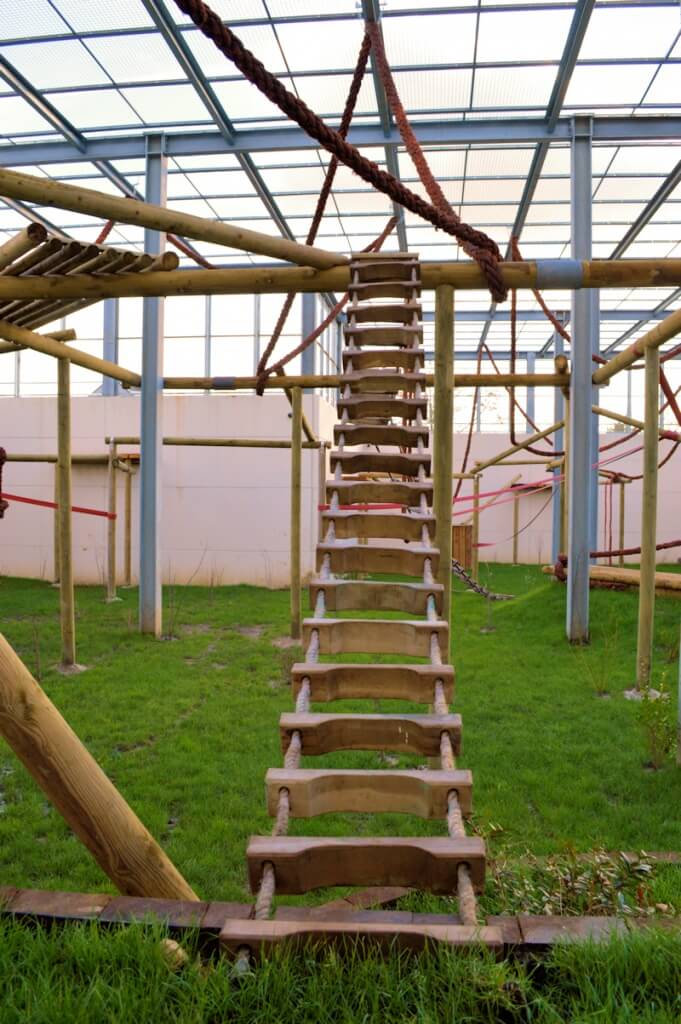 Before agreeing to make this donation, an interdisciplinary team of Yerkes employees thoroughly evaluated WWP. This review included assessing the expertise of veterinary and animal care staff, reviewing regulatory reports and evaluating facilities, finances and community support. The Yerkes team also contributed to the design of the new habitat, which was designed and has been built specifically for chimpanzees. In addition, the Yerkes team conducted a site visit prior to entering the donation agreement, has been in frequent contact with WWP personnel throughout the last two years, hosted WWP personnel on site at Yerkes to train the staff in the center’s animal care procedures, visited the park again late in 2015 to assess construction progress and will accompany the chimpanzees during the transfer process. “We are confident WWP will meet our high expectations for the care of the chimpanzees we are donating,” says Joyce Cohen, VMD, Yerkes’ associate director for animal resources.
Before agreeing to make this donation, an interdisciplinary team of Yerkes employees thoroughly evaluated WWP. This review included assessing the expertise of veterinary and animal care staff, reviewing regulatory reports and evaluating facilities, finances and community support. The Yerkes team also contributed to the design of the new habitat, which was designed and has been built specifically for chimpanzees. In addition, the Yerkes team conducted a site visit prior to entering the donation agreement, has been in frequent contact with WWP personnel throughout the last two years, hosted WWP personnel on site at Yerkes to train the staff in the center’s animal care procedures, visited the park again late in 2015 to assess construction progress and will accompany the chimpanzees during the transfer process. “We are confident WWP will meet our high expectations for the care of the chimpanzees we are donating,” says Joyce Cohen, VMD, Yerkes’ associate director for animal resources.
As well as the chimpanzees, the new enclosure is home to the park’s small primates and some of the park’s smaller mammals, including armadillos and sloths. Since December 2015, visitors to the park have been able to see the chimpanzee enclosure as well as the small animal area, which is accessible via stairs as well as a lift so all can enjoy. “From an educational standpoint, it made sense for us to draw connections between the chimpanzees that are amongst the world’s largest primates, along with the other great apes, and some of the world’s smallest primates, such as marmosets and tamarins,” says Binskin. “I think it’s easy for people to forget we, too, are primates, and by showing the vast variety this family encompasses helps people see these animals are not as different to us as we think.”
Ruth Wilder, head keeper of the park and the person who would be overseeing the settling-in period for these chimps, says, “We are ready for these chimps to come to the park. I have had the pleasure of spending time with these chimpanzees to get to know them and their routines and personalities. Each animal is unique, and I know all of the chimpanzees will fit in just fine in the new home we have built for them.”
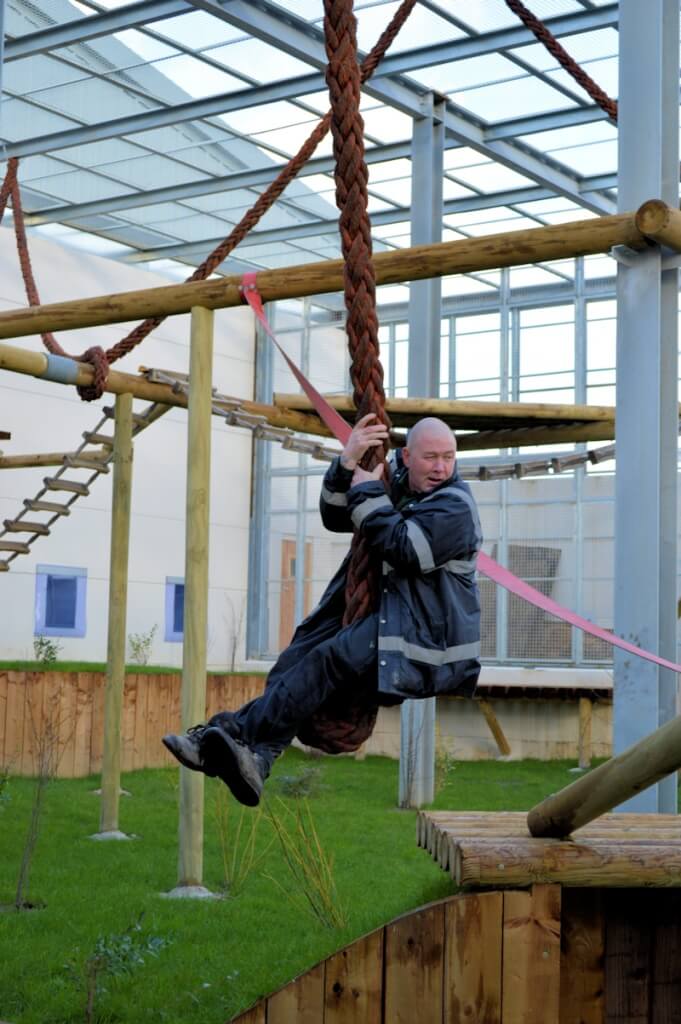 Ambitious plans to enhance lives of chimpanzees in the wild are included in the information the USFWS posted online with the comment link. These enhancements include WWP and Yerkes collectively donating £150,000 over five years to the Population and Sustainability Network (PSN). PSN will design and implement a new integrated health and conservation initiative, benefitting a community and the chimpanzees living in an adjacent protected area in either the Democratic Republic of Congo, Rwanda, Tanzania or Uganda. David Johnson, chief executive of PSN, says, “Many national parks where chimpanzees are still present are surrounded by settlements where human health and chimpanzee health are connected. Lack of adequate sanitation and hygiene can lead to communicable diseases passing between human and chimpanzee neighbours, and lack of access to voluntary family planning information and services leads to unplanned and mistimed pregnancies, impacting human health and increasing population pressures on habitat. Wingham and Yerkes’ substantial financial support will enable us and our partners to improve both human and chimpanzee health.”
Ambitious plans to enhance lives of chimpanzees in the wild are included in the information the USFWS posted online with the comment link. These enhancements include WWP and Yerkes collectively donating £150,000 over five years to the Population and Sustainability Network (PSN). PSN will design and implement a new integrated health and conservation initiative, benefitting a community and the chimpanzees living in an adjacent protected area in either the Democratic Republic of Congo, Rwanda, Tanzania or Uganda. David Johnson, chief executive of PSN, says, “Many national parks where chimpanzees are still present are surrounded by settlements where human health and chimpanzee health are connected. Lack of adequate sanitation and hygiene can lead to communicable diseases passing between human and chimpanzee neighbours, and lack of access to voluntary family planning information and services leads to unplanned and mistimed pregnancies, impacting human health and increasing population pressures on habitat. Wingham and Yerkes’ substantial financial support will enable us and our partners to improve both human and chimpanzee health.”
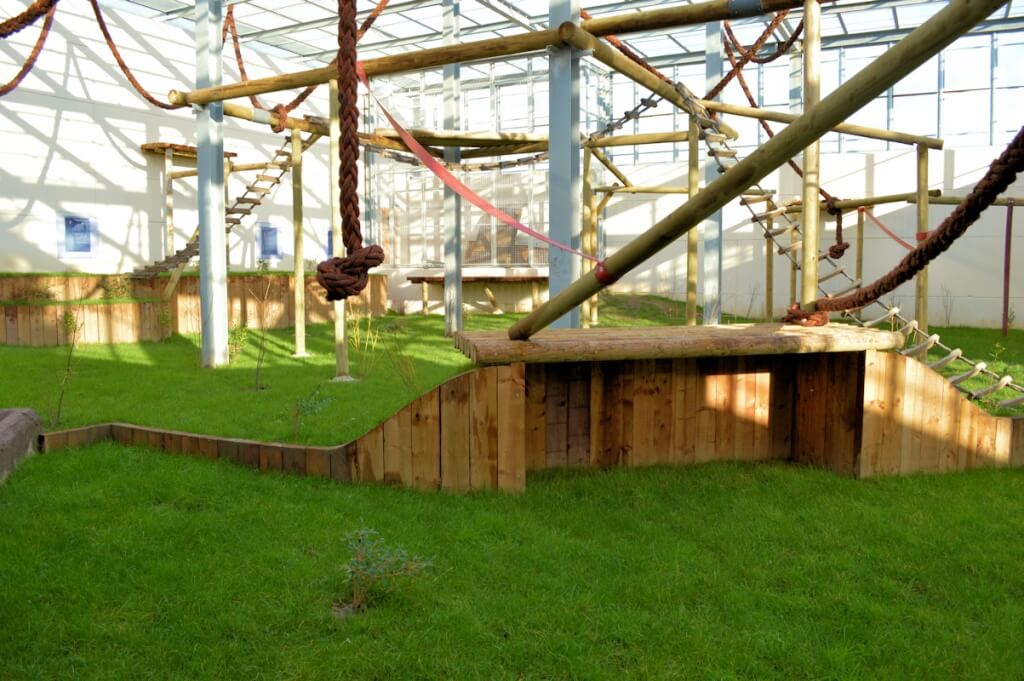
Dr Jane Goodall
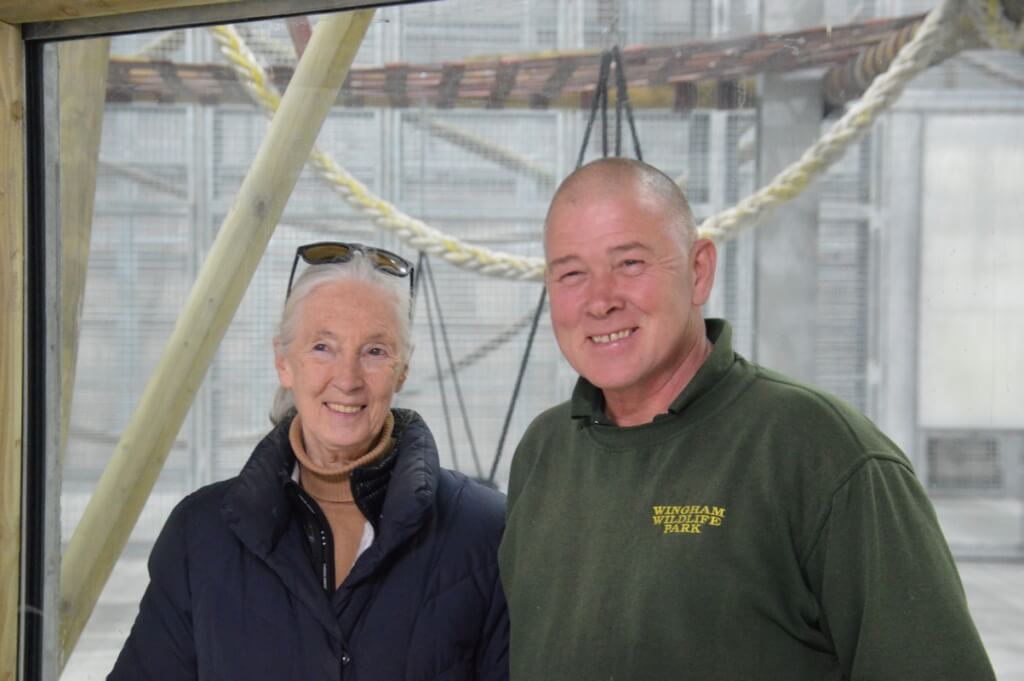
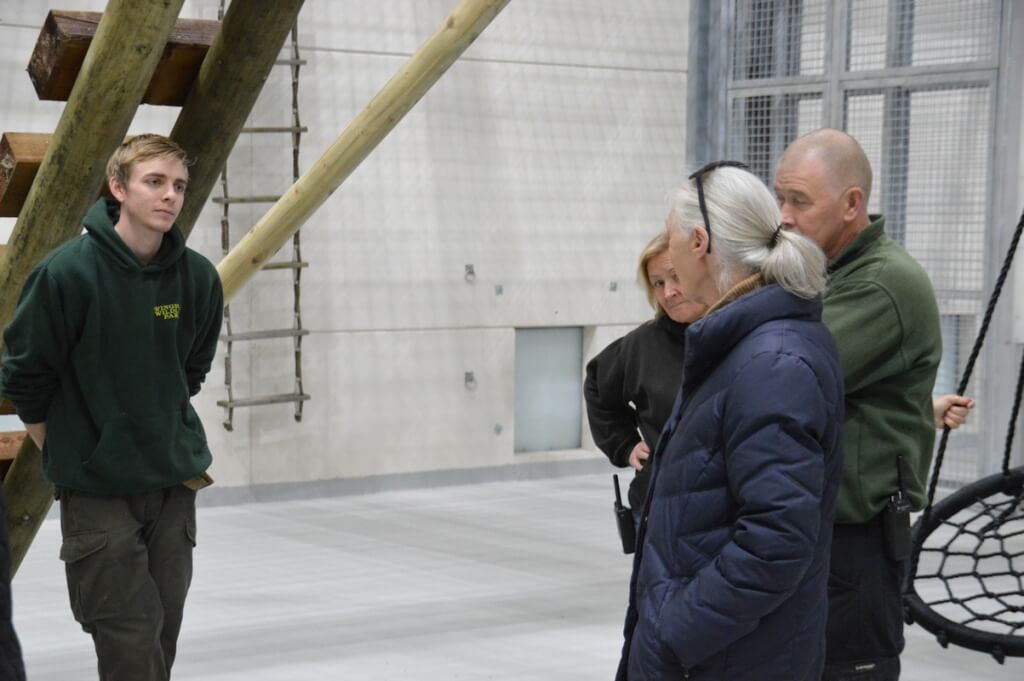
On 19th December 2015, Wingham Wildlife Park staff made the announcement that you can follow in the footsteps of chimpanzee expert, Dr. Jane Goodall DBE Founder of the Jane Goodall Institute & UN Messenger of Peace, by seeing what we have got ready for the arrival Fritz, Lucas, Georgia, Elvira, Agatha, Tara and Faye. Even though the chimps are not yet here we would like to show our visitors what the chimps can look forward to and hope that you will all be as pleased with the enclosure as Dr Goodall was.
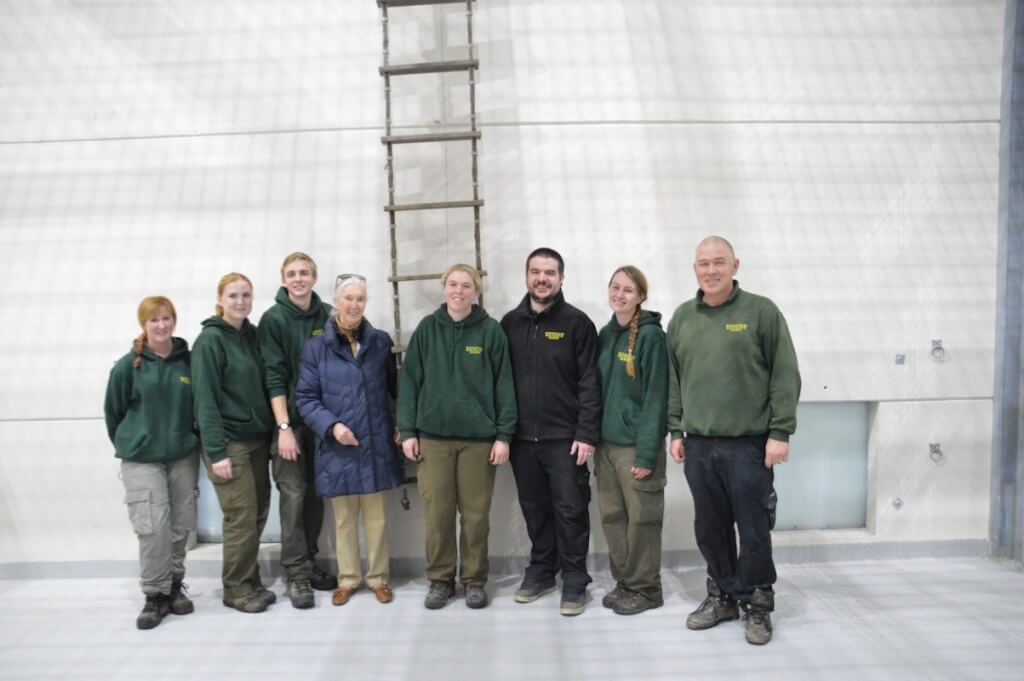
However, since 25th October 2016 visitors to the park can do even better than that, as you can join us in the chimpanzee house where you can see these 7 amazing individuals who have settled in to park life very well, whilst also learning as much as you can from the signs which accompany the exhibit (which is also home to the first ever smart phone audio tour segment implemented at the park).
In 2018 our chimpanzees displayed just how well they had settled in with us when adorable little Elizabeth was born to parents Tara and Fritz. She has thrived within the troop who dote on her and allow her to get away with all kinds of mischief.
The more you know…
Want to know more about this animal? Check out our keeper blogs about them here.
Conservation- A brief Look at the Last Decade
Did you know? – Monkey Edition for Monkey Day!
Elizabeth- The First Year In The Life Of A Chimpanzee
Elizabeth- The Second Year in the Life of a Chimpanzee